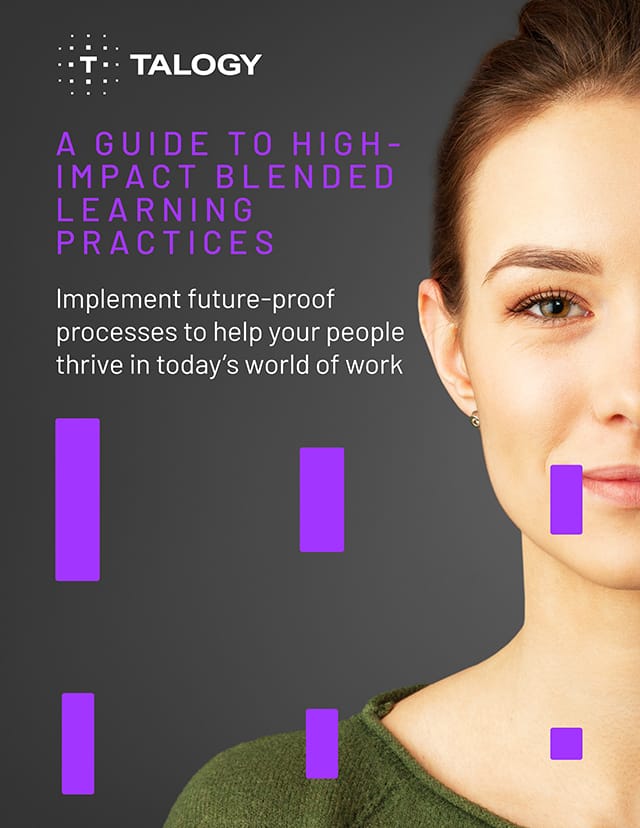Written by Paul Glatzhofer, VP of Talent Solutions
Previously published by PSI Talent Management or Cubiks, prior to becoming Talogy.
Training and Development Is Changing at a Rapid Pace
In order to stay ahead of the curve, organisations must use their training and development programs in a way that is not only beneficial for their employees, but also keeps them in line with organisational goals as a whole. Considering this, I’ve assembled a list of the top trends in training and development.
Best Practices
Even with all the new technology available, I believe there will be a “return to basics” in the 2020s regarding leadership development. The problems leaders are having are not new or unique. They need to develop skills around a few key areas:
- Holding others accountable
- Communication
- Employee development
The problems leaders face may manifest themselves a bit differently given the changing nature of work (e.g., working with remote employees, working with different generations, etc.), but these core leadership skills are still critical for success.
Changing Nature of Work
I have never been in a situation where an organisation wasn’t trying to adapt, change and thrive. It really falls on an organisation’s leaders to drive change in a positive way – and this makes it really important to select and develop leaders in this area.
Generations in the Workplace
One of the biggest challenges organisations face is the rapid promotion of millennials. Baby boomers are retiring, which means there is a gap that needs to be filled. Thirty years ago it may have taken most of an employee’s career to be promoted into a leadership role – just recently, I spoke with a nurse who said it took her 25 years to be promoted. However, due to some of the gaps left by retirements, companies might be faced with promoting individuals earlier than before, hence the increased need for leadership development.
New Technology/Artificial Intelligence
In my opinion, ”Artificial Intelligence” has been a trendy term that’s been used over the past 10 or so years with no standard or real meaning behind it. This is definitely true as it relates to leadership development and coaching. Similar to my thoughts above around returning to basics, I think companies will shy away from the “shiny new toys” and rely on tried and true methods of development. Or – and maybe more realistically – they will use technology to augment/supplement the development process.
Diversity/Inclusion
The topic of diversity and inclusion is in the front of everyone’s minds right now and will become increasingly more important moving forward. Companies need to foster a culture of inclusion where employees are treated fairly and feel safe when going to their managers with concerns. Great leaders are imperative in leading that charge.
Stress Management
Recently, we have seen an increase in interest and requests for leadership development around relationship building and respect – not only related to diversity and respecting individual differences, but also related to increasing incidents of bullying, workplace mobbing, and unprofessional behaviour. When we take a deeper look at what is causing these incidents, stress often appears to be the cause.
Resilience and Adaptability
As work environments get more and more complex and diverse, it is imperative that leaders are able to adapt, adjust, and realign quickly and effectively. This is unlikely to change any time soon and, in fact, considering the points we discussed above regarding technology, diversity, and changing nature of work, it will be more important than ever before.
What they say about change is true: it’s constant. Organisations should keep that, along with the trends we’ve outlined above, in mind as they build their training and leader development plans. Agility and adaptability are the keys to success as we move into the new decade.


